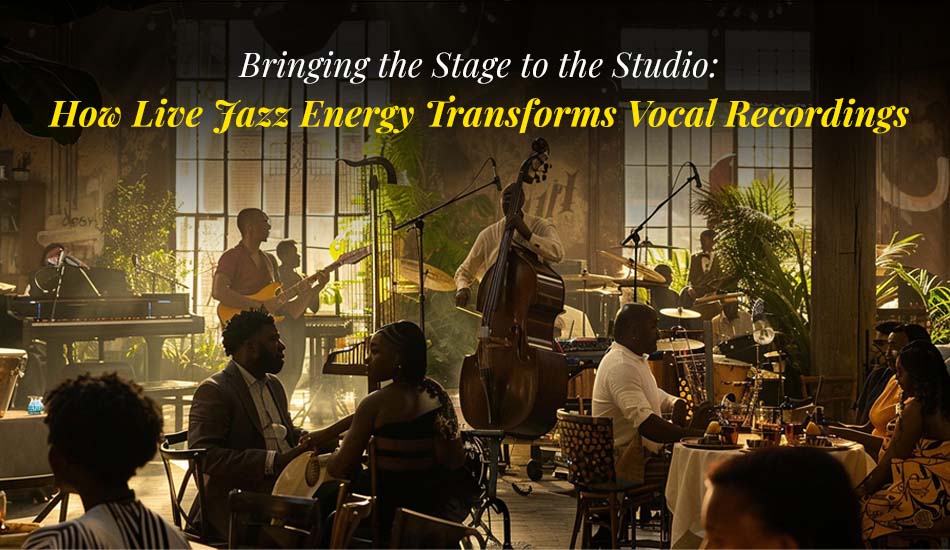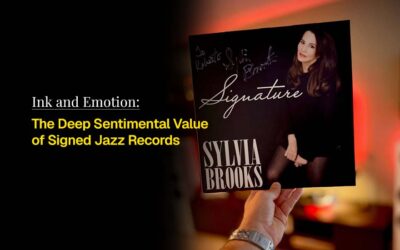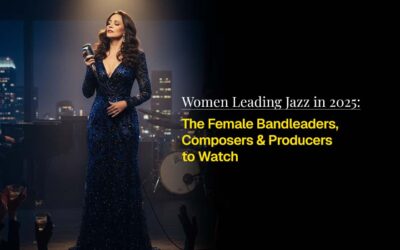All the energy coursing through you as you perform live is bewitching. At this moment, an audience awaits a note; this kind of excitement is unique. Many of history’s best female jazz vocalists took a paradigm from live performance into their recording sessions. Today’s jazz vocals combine the artistry of live shows with studio precision to bring songs that are just as emotional and true in life on-stage as off.
The Power of Performing Live – Emotion, Expression & Energy
It is because the best female jazz vocalists fold their live performance energy into their studio recordings. Emotion builds on stage as the audience responds. Every cheer or silent moment urges a singer to do more. Take that same energy and put it into a recording, and it is polished but alive.
Vocal Techniques Artists Bring from Stage to Studio
Singing live requires strong projection, flexibility, and quick thinking. These characteristics are just as important when you sing into a microphone:
- Dynamics – adjusting the vocal power to come out strong or soft.
- Creative phrasing – each performance is new and special.
- Breath and presence – the emphasis in recording is on connecting with human beings through feeling reality rather than putting polish on every detail.
How Sylvia Brooks Captures Stage – Like Emotion in Her Studio Albums
One of today’s most exquisite jazz singers, Sylvia Brooks, demonstrates how the intensity of live performances influences tracks cut in the studio. Her album Signature combines personal songs with the deep feeling she delivers live on stage. But she brings that presence into the studio, blending the raw energy of live performance with the polished finish of recording.
The Jazz Studio Experience – Honoring Tradition While Embracing Innovation
Jazz has traditional roots, but in a studio, you can build the sound in totally new ways. Many jazz music songs mix old-school swing with fresh elements that are just coming out now. With this mix, fans feel the way the music came from, and they see that this is exactly how it has grown. Recording jazz, unlike rock or pop, does not focus on improvisation, but this technical input just supports and highlights what you want to do.
Creating Intimate Recordings That Feel Like Live Shows
Jazz fans often want to feel as if they are sitting in some cozy club, hearing the music right in front of them. The result these days is recordings of little moments that are intimate, like a quiet breath intake, the rich hum of a piano chord, or the natural warmth of a singer’s voice. Such techniques have done for a studio track what they did for live music: making it feel just as personal and alive.
How Live Performance Influences Track Arrangement & Delivery
The way a song is performed live can influence how it gets arranged in the studio later. A song that gets a crowd up may have the build-up built bigger, while a quiet ballad that holds them spell-bound will be recorded with fewer instruments and an airier sound. When one creates music from the same source as those best female jazz vocalists, the audience often becomes a subtle yet important influence on the production process.
Final Thoughts – The Stage Still Lives in the Studio
Music brings people together. It connects the artist with his listeners, combines law and grace, and links past with present. A studio record may differ completely from the clapping audience and show lights at a live concert, but when musicians bring their live stage energy into the studio, that music still has its life. For fans of jazz music songs, every recording becomes more than just sound; it becomes a performance preserved in time.




